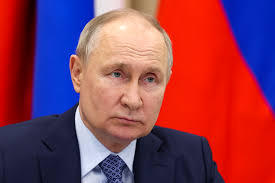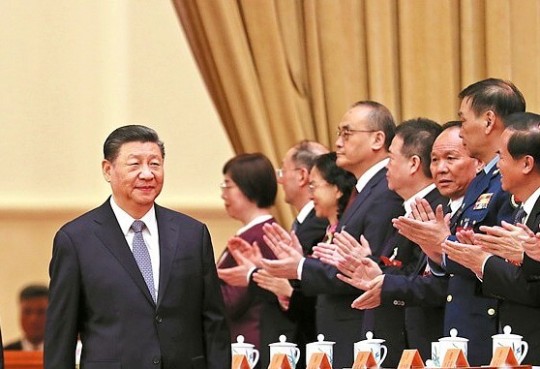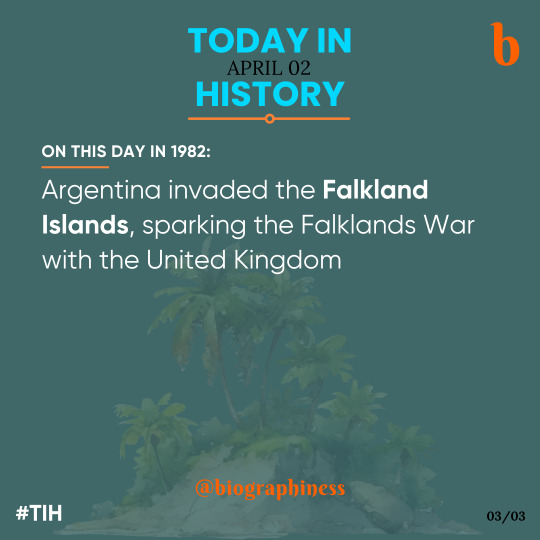#militarystrategy
Explore tagged Tumblr posts
Text
Putin's Worst Nightmare May Be Coming True in the Pacific.
Japan boosts defense amid rising Pacific tensions. #AsianNATO #JapanDefense #PacificTensions #MilitaryStrategy #Palenzie #shorts
0 notes
Text
Iran Planning to Use More Powerful Weapons in Next Attack on Israel: Rising Tensions and Global Concerns.
Iran Planning to Use More Powerful Weapons in Next Attack on Israel: Rising Tensions and Global Concerns. In a concerning development, Iran has announced plans to deploy more powerful weapons in its next attack on Israel. This announcement follows a series of escalating retaliatory strikes between the two nations, raising alarms across the international community. The potential use of advanced…
0 notes
Text

What will happen if someone launches a nuclear bomb?
Is the all-out nuclear World War III inevitable?
What is the most likely response on an attack with a nuclear weapon?
How likely is a nuclear World War III?
From article: https://zzmeditations.substack.com/p/whos-afraid-of-nuclear-war-apocalypse
#WorldWarIII#NuclearWar#NuclearThreat#WWIII#GlobalConflict#Geopolitics#MilitaryStrategy#GlobalSecurity#NuclearDeterrence#MutuallyAssuredDestruction#PeaceThroughStrength#NoWar#NuclearNonProliferation#ChoosePeace#EndWar#WhatIf#HumanSurvival#FutureScenarios#GlobalStakes#EndTimesOrNot#ColdWarLessons#NeverForget#RememberHistory#LearnFromHistory#HumanExtinction
0 notes
Text
Title: Geopolitics and Realpolitik Today
Title: Geopolitics and Realpolitik Today Date: October 8, 2024, 10:00 AM IST 5P Theme: Positivity, Peace, Patience, Prayer, Priorities Quote of the Day: “Positivity in action is the real test of leadership.” — Bard’s Suite by Dhananjay Parkhe Today’s Inspirational Quote: “Patience is the key to unlocking the gates of peace.” — Bard’s Suite by Dhananjay Parkhe 4-Liner Poems on Today’s…
#BalanceInPower#BRICS#C#CorporateBard#CorporateBardExcellence#CorporateBardsRadar#DefenseStrategy#DhananjayParkhe#DiplomaticInfluence#EconomicPower#G20#Geopolitics#GlobalAlliances#GlobalChessboard#GlobalDiplomacy#GlobalLeadership#GlobalNegotiation#HardDiplomacy#IndiaDiplomacy#IndiaGlobal#IndiaInfluence#InternationalRelations#LeadershipBalance#LeadershipInPolitics#MilitaryStrategy#NationalSovereignty#PeaceInGeopolitics#PeaceInPolitics#PeacePatiencePriorities#PoliticalWisdom
0 notes
Text
Ukraine's Rapid Advances and the Shifting Dynamics of the Conflict
#UkraineWar#RussiaUkraineConflict#UkrainianCounteroffensive#KurskOffensive#WarDynamics#MilitaryStrategy#GeopoliticalShift#EasternEuropeanConflict#WarAnalysis#BattlefieldDevelopments#MilitaryCasualties#WarfareEvolution#InternationalRelations#DefenseStrategy#MilitaryLogistics#WarReporting#ConflictResolution#GlobalSecurity#WarInEurope#MilitaryIntelligence#DefensePolicyZZ#StrategicWarfare#ArmedConflict#WarStrategy#MilitaryOperations#GeopoliticalAnalysis#DefenseNews#MilitaryAffairs#InternationalSecurity
1 note
·
View note
Text
What If Hitler Didn’t Attack Leningrad?
World War II is often analyzed through the lens of crucial decisions that altered its course. One of the significant strategic errors made by Adolf Hitler was the decision to lay siege to Leningrad, a move that has sparked numerous debates among historians and military strategists. Had Hitler decided against attacking Leningrad, it’s worth exploring how this could have potentially altered the outcome of the war in favour of Nazi Germany.
Leningrad (now Saint Petersburg) held immense strategic value. It was not only a major industrial center but also a crucial port and symbolic city, embodying Soviet resilience and history. The siege of Leningrad, lasting from September 1941 to January 1944, was one of the longest and most destructive sieges in history, leading to catastrophic civilian casualties and suffering.
Redirecting Resources: Potential Advantages for Nazi Germany
Had Hitler not committed to the siege of Leningrad, the resources and manpower allocated there could have been redirected to other critical fronts. Here’s how these redirected resources might have influenced the war:
Moscow Offensive: By sparing Leningrad, Germany could have concentrated more forces on Operation Typhoon, the offensive aimed at capturing Moscow. A stronger push towards Moscow could have potentially led to its capture before the harsh Russian winter set in, crippling the Soviet command and communication hub.
Southern Front: Redirecting forces to the southern front could have expedited the German advance towards the oil-rich Caucasus region. Securing these vital resources would have significantly bolstered the Nazi war machine, addressing the critical fuel shortages that plagued their operations.
Eastern Front Reinforcement: Bolstering other areas of the Eastern Front might have prevented the devastating Soviet counteroffensives, such as the one at Stalingrad. With stronger defenses, the German Army could have maintained its momentum and possibly achieved a more favorable position.
The symbolic importance of Leningrad cannot be understated. Its fall could have delivered a severe blow to Soviet morale and propaganda, potentially weakening Stalin’s grip on the Soviet Union. Conversely, the survival and eventual lifting of the siege became a symbol of Soviet endurance and resistance, galvanizing the population and the Red Army.
While redirecting resources away from Leningrad could have offered tactical advantages, several factors still challenge the notion that this would have ensured a German victory:
Logistical Challenges: The vast expanse of the Soviet Union posed severe logistical nightmares for the Wehrmacht. Even with additional resources, sustaining long supply lines in harsh conditions would have remained a formidable challenge.
Allied Interventions: The United States' entry into the war and the increasing support from the Allies, including the Lend-Lease program supplying the Soviet Union, would have continued to strengthen the Allied position over time.
Soviet Resilience: The Soviet Union’s ability to mobilize its vast resources and manpower, coupled with its industrial relocation east of the Urals, ensured that it could continue to replenish its forces and sustain prolonged conflict.
While avoiding the siege of Leningrad might have provided Nazi Germany with tactical advantages and possibly altered the dynamics on the Eastern Front, it is far from certain that this would have led to an outright German victory in World War II. The complexities of the war, including logistical challenges, Allied interventions, and Soviet resilience, suggest that the ultimate outcome would likely have remained a protracted and uncertain struggle.
In the realm of historical speculation, the decision not to attack Leningrad opens intriguing possibilities. However, the multifaceted nature of global conflict means that a single change, while significant, would not necessarily have been decisive in altering the war’s ultimate outcome.
The interplay of numerous factors and the sheer scale of World War II make it clear that victory for Nazi Germany would have required more than just a different tactical choice regarding Leningrad.
#WorldWarII#AlternateHistory#Hitler#Leningrad#EasternFront#MilitaryStrategy#NaziGermany#SovietUnion#OperationBarbarossa#MoscowOffensive#WWIIHistory#HistoricalSpeculation#AxisPowers#AlliedForces#WWIITactics#WarHistory#BattleOfLeningrad#SovietResistance#WhatIfHistory#MilitaryHistory#history#deep thinking#deep thoughts#new blog#today on tumblr
0 notes
Text

#Russia#Putin#DefenseMinister#WarEconomy#MilitaryStrategy#EconomicPolicy#Kremlin#AndreiBelousov#SergeiShoigu#NATO#UkraineConflict#MilitaryIndustrialComplex#EconomistDefenseMinister
0 notes
Text
Delve into the enduring influence of Sun Tzu's 'The Art of War' and the enigmatic world of East Asia's shadow warriors, shaping history with strategic thinking and covert operations.
0 notes
Text
Kritenbrink's Visit Shapes US-China Ties

In a pivotal moment for US-China relations, Assistant Secretary Kritenbrink is set to visit China from April 14-16, 2024. This diplomatic effort aims to sustain open dialogue and manage the strategic rivalry through increased cooperation and understanding.
Context: Competition and Cooperation
The US and China, two superpowers with a complex web of interactions, have recently intensified their diplomatic communications. The upcoming visit by Assistant Secretary Kritenbrink highlights an ongoing effort to manage these dynamics, building on the momentum from the Woodside Summit between President Biden and President Xi Jinping in November 2023.

President Xi Jinping and some of his leaders. Photo by Zou Hong. China Daily. Significance of Open Communication Diplomats and experts underscore the necessity of "competition without conflict" in US-China relations. Engaging in open, consistent dialogue helps both nations navigate tensions in areas like trade, regional security, and global governance. This approach aims not only to address immediate concerns but also to lay the groundwork for enduring stability. Strategic Areas of Competition Despite a focus on dialogue, competition remains fierce. The US continues to strengthen ties with allies in the South China Sea and ramp up defenses against potential cyber threats, jointly with allies like the UK, Philippines, and Australia. These actions reflect ongoing strategic maneuvers to maintain balance and deter aggression.
Future Possibilities: Pressures and Opportunities
The current global landscape exerts significant social and economic pressures on both the US and China, pressing them towards more strategic cooperation. Both nations face internal demands for economic growth and social stability, which can be catalysts for collaboration, especially in trade and environmental initiatives. Incentives for Cooperation As global powerhouses, the US and China find common ground in addressing worldwide challenges such as climate change, pandemics, and nuclear non-proliferation. Cooperation in these areas not only serves mutual interests but also contributes to global stability—a crucial element of both countries' foreign strategies. Technological Rivalry and Opportunities Technological advancements, particularly in AI, present both challenges and opportunities. While there is potential for conflict over intellectual property and trade restrictions, there also lies the possibility for joint development and standards setting, which could mitigate risks and foster mutual economic benefits.
Challenges and Uncertainties
Managing this bilateral relationship without escalating into open conflict remains a daunting challenge, especially in contentious zones like the South China Sea and in the realm of cyber operations. Domestic politics in both the US and China also play a significant role, where shifts in leadership or policy can drastically alter the trajectory of diplomatic relations. Global Context and Military Strategies Recent US military strategies label China as a significant long-term threat, complicating diplomatic efforts. Additionally, global crises like the ongoing conflict in Ukraine stretch US resources, potentially affecting its ability to sustain engagement in the Pacific.
Towards a Stable Yet Dynamic Equilibrium
The balance between competition and cooperation in US-China relations remains delicate and dynamic. Assistant Secretary Kritenbrink's visit signifies a crucial step toward navigating this complex relationship, striving to uncover areas of mutual benefit amidst global uncertainties. Sources: THX News, Brookings (various articles), CSIS & US Department of State. Read the full article
#AssistantSecretaryKritenbrink#bilateralagreements#cybersecuritychallenges#Economiccooperation#globalpowerbalance#InternationalDiplomacy#militarystrategy#technologicalrivalry#Tradenegotiations#US-Chinastrategiccompetition
0 notes
Text
youtube
#genghiskhan#history#historymystery#mongolia#MongolEmpire#MilitaryStrategy#HistoricalFigures#WorldHistory#AncientCivilizations#MongolianHistory#GenghisKhanBiography#GenghisKhanDocumentary#GenghisKhanFacts#Youtube
0 notes
Text



In March 2nd from uncharted shores to naval clashes, history unfolds!🌊⚓🎆
Follow👉 @biographiness
#Biographiness#Biograghines#TodayInHistory#TIH#onthisday#OTD#HistoryEvents#DailyHistory#HistoryFacts#April2#HistoryMatters#History#Exploration#FalklandsWar#HistoricJourneys#NewWorld#Discovery#FloridaLanding#PonceDeLeon#NavalBattle#Copenhagen1801#BritishVictory#Truce#Argentina#UK#IslandInvasion#WarHistory#MilitaryStrategy
1 note
·
View note
Text
#palenzieperp How I Defeated ISIS with Top Generals in Weeks
Discover our incredible journey in the fight against ISIS, where we collaborated with the finest generals in Iraq. Learn how we accomplished what others deemed impossible in just a few weeks. This is our behind-the-scenes story of rapid victory against a formidable adversary. #ISISDefeat #MilitaryStrategy #VictoryInWeeks #IraqOperation #TopGenerals #CounterTerrorism #MilitarySuccess…
#CaliphateDefeated#CounterTerrorism#FastTrackVictory#IraqOperation#ISISDefeat#MilitaryStrategy#MilitarySuccess#TopGenerals#VictoryInWeeks#WarStories
0 notes
Text
youtube
🌐 Explore the Latest Pentagon Report on China's Military Power! 🚀
In our latest video, we unravel the eye-opening findings from the Pentagon's report on China's military expansion. Discover the alarming pace of China's nuclear arsenal growth, its impact on global security, and the regional tensions it's sparking. We delve into China's military ambitions, defense budget, and their growing influence in the Asia-Pacific region.
🔍 Stay informed about the evolving dynamics in international relations and geopolitics. Join the conversation, share your thoughts, and be part of the global discussion.
📺 Watch the full video on our YouTube channel and subscribe for more in-depth analyses and updates on pressing global issues. Knowledge is power! 💪🌍
#china#america#united states#military#ChinaMilitary#NuclearExpansion#PentagonReport#GlobalSecurity#TaiwanTensions#MilitaryModernization#AsiaPacific#USChinaRelations#DefenseBudget#NationalSecurity#Geopolitics#NuclearArmsRace#MilitaryTechnology#MilitaryStrategy#USForeignPolicy#Diplomacy#EconomicImpact#AsiaSecurity#NuclearPolicy#RegionalTensions#Warfare#ConflictResolution#InternationalRelations#MilitaryBalance#NuclearDeterrence#Youtube
0 notes
Text
US Billions $ FLYING Aircraft Carrier Is Finally Ready For Action
youtube
Introducing airborne aircraft carriers: where the sky meets strategy and innovation soars. Elevating naval power, these giants blend aviation with maritime might. During the 1920s, the United States was at the forefront of aircraft carrier development. The only dedicated examples to have been built were airships, although existing heavier-than-air aircraft have been modified for use in similar roles, and airborne aircraft carriers of various types appear in fiction, such as Cloudbase in Gerry Anderson's Captain Scarlet and the Mysterons, the Valiant from series 3 of Doctor Who, and an unnamed one in Sky Captain and the World of Tomorrow. In theory, the idea of an airborne carrier appears ideal—an aircraft carrier that traverses both land and water, transforming into a floating base in the skies. Nonetheless, the practicality of creating such a weapon platform appears remote. Several factors contribute to this improbability. Firstly, the sheer magnitude of constructing such a colossal craft raises financial concerns. The endeavor would demand resources on a scale that could challenge even a small nation's budgetary capacities. Moreover, to embark on such a venture, a specialized construction facility would need to be established expressly for this intricate project.
#AirborneAircraftCarriers#NavalInnovation#AviationTechnology#MilitaryStrategy#InnovationChallenges#AircraftCarrierDevelopment#1920sInnovation#FictionalAircraftCarriers#SkyCaptain#CaptainScarlet#Youtube
0 notes
Link
📱😥🙏🛡️🐻⚔️
0 notes
Video
youtube
Ottoman Military Secrets FINALLY Revealed! #shorts #ytshorts
#youtube#OttomanEmpire MilitaryHistory WarfareEvolution siegewarfare constantinople gunpowderweapons janissaries navalinnovations militarystrategy h
0 notes